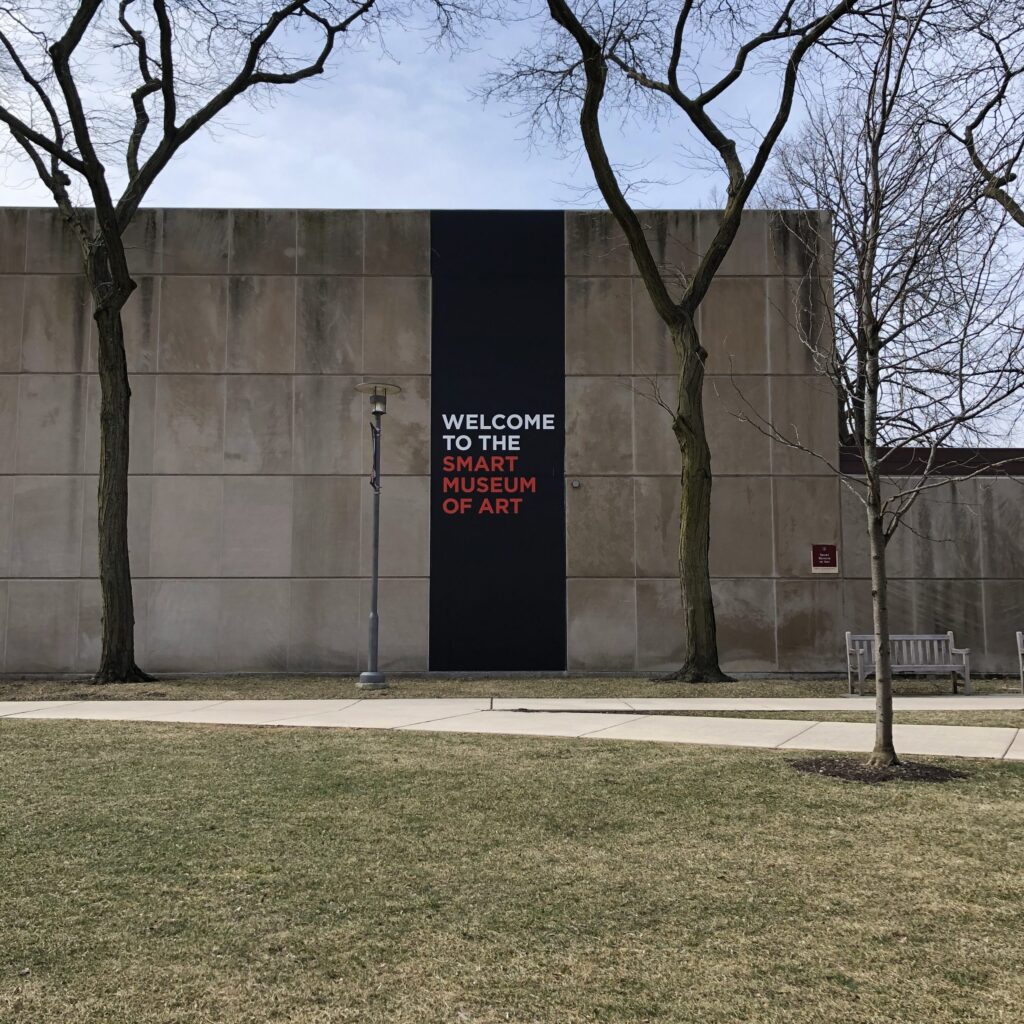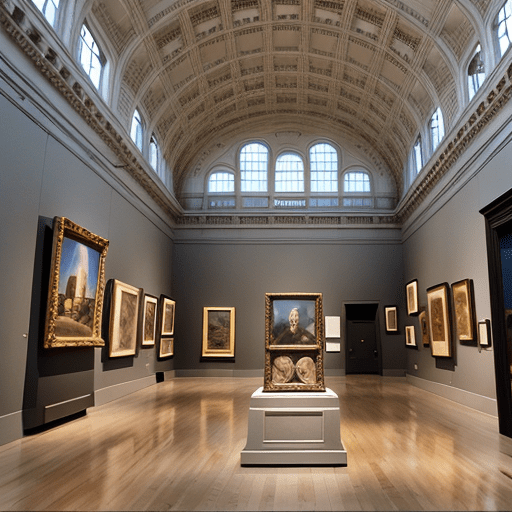Experience Culture and Art at the Smart Museum in Chicago
On the grounds of the University of Chicago, the Smart Museum of Art is a great place to visit for culture and art in Chicago. Named in honor of the entrepreneurial Smart brothers, David and Alfred, this museum not only enriches the university’s community but also serves as a pivotal part of the art museums in Chicago. With a mission to open the world through art and ideas, the Smart Museum of Art welcomes everyone, offering free admission to its diverse and innovative exhibitions.
Currently undergoing reinstallation, the Smart Museum of Art is poised to enhance its role in redefining artistic canons and engaging with diverse communities. With a rich history of scholarly and community collaborations, it remains a key destination for those looking to explore the dynamic interplay of art, ideas, and public programs in the vibrant setting of the University of Chicago and the broader cityscape.
The History of Smart Museum of Art
The Smart Museum of Art, a cornerstone of the University of Chicago and a prominent figure among art museums in Chicago, has a storied history that dates back to its inception in 1974. Named in honor of David and Alfred Smart, the brothers behind the Smart Family Foundation, the museum’s journey from an ambitious idea to a revered institution is marked by significant milestones and achievements.
- Foundational Moments and Architectural Evolution:
- The museum was officially dedicated on October 22, 1974, signaling the realization of a vision first proposed by the University of Chicago’s first president, William Rainey Harper, in the late 19th century.
- Architect Edward Larrabee Barnes was entrusted with designing the museum’s building, which saw expansions and renovations in 1999 and 2008, integrating facilities for music and visual arts and enhancing its architectural presence.
- A pivotal moment came in 1967 when the Smart Family Foundation made a founding gift, catalyzing the museum’s development. This was followed by a significant bequest of $5 million from Paul and Miriam Kirkley in 1999 to establish an endowment for art acquisitions.
- Programmatic Expansion and Community Engagement:
- Gaining administrative autonomy in 1983, the museum transitioned from being run within the art history department to an independent entity, marking a new chapter in its operational and programmatic capabilities.
- The 1990s were a period of seminal growth for the Smart Museum, with the launch of educational programs targeting local public schools and fostering collaborations with faculty, thereby broadening its community engagement and educational outreach.
- Noteworthy exhibitions such as ‘Between Past and Future: New Photography and Video from China’ in 2004 underscore the museum’s commitment to presenting pioneering and diverse artistic narratives.
- Recognition and Accessibility:
- The museum’s name evolved to the David and Alfred Smart Museum of Art in the 1990s, further solidifying its identity and honoring its benefactors.
- Accreditation by the American Alliance of Museums attests to its adherence to high standards of operation and public service.
- With a strong emphasis on accessibility, the Smart Museum of Art offers free family programs, including Spring Family Days, underlining its mission to make the arts accessible to the University community and the wider public.
This historical progression not only underscores the Smart Museum of Art’s role as a cultural and educational pillar within the University of Chicago but also highlights its significant impact on the art museums in Chicago landscape. Through its dedication to programmatic expansion, community engagement, and the accessibility of the arts, the Smart Museum continues to foster a deep appreciation of art and culture among diverse audiences.
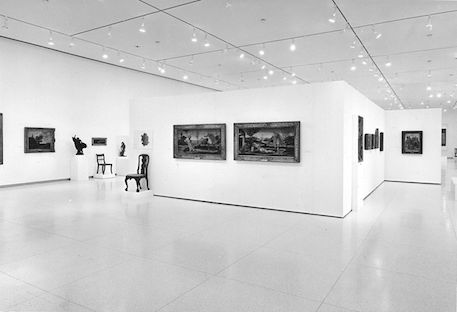
Collections and Exhibitions
The Smart Museum of Art boasts a robust collection that spans various epochs and geographical regions, reflecting its commitment to diversity and inclusivity in the arts. Key highlights of the museum’s collection include:
- Modern Art Collection:
- Artists: Features eminent artists such as Paul Delvaux, Arthur Dove, Childe Hassam, Walt Kuhn, Norman Lewis, Roberto Matta, Joan Mitchell, Jean Metzinger, Diego Rivera, and Mark Rothko.
- Focus: Emphasizes the evolution of modern art through painting, showcasing the depth and breadth of artistic innovation from the early 20th century onwards.
- Asian Art Collection:
- Components: Includes literati scroll paintings from China, Japan, and Korea, alongside Buddhist sculpture, ceramics, and ukiyo-e prints, offering a comprehensive view of Asian artistic traditions.
- Significance: This collection provides insight into the rich cultural and religious heritage of Asia, highlighting the region’s influence on global art history.
- European Collection:
- Era: Concentrates on art created before 1900, with notable works from the Kress Collection, including pieces by Cecco Bravo, Luca Cambiaso, Donato Creti, Pordenone, Girolamo da Santa Croce, Jan Steen, and Paolo Veronese.
- Importance: Showcases the foundational elements of Western art history, emphasizing the Renaissance, Baroque, and Rococo periods.
- Contemporary Art Collection:
- Artists: Contains works by John Chamberlain, Antony Gormley, Robert Irwin, Sylvia Sleigh, Andy Warhol, and Claire Zeisler.
- Focus: Highlights the museum’s engagement with contemporary issues and its support for innovative artistic expressions.
The museum’s exhibitions serve as a dynamic platform for exploring the intersections of history, culture, and art. Noteworthy exhibitions include:
- Carved, Cast, Crumpled: This exhibition features works from the museum’s collection and promised gifts, including pieces by Alexander Calder, Jean Arp, Baccio Bandinelli, and H. C. Westermann, offering a diverse exploration of form and material.
- Meiji Modern: Fifty Years of New Japan: Scheduled to open on March 21, 2024, this exhibition commemorates the museum’s 40th anniversary. It looks to the future by including works of art that are promised gifts and experimenting with new methods of display and interpretation. The exhibition aims to provide a comprehensive understanding of Japan’s Meiji period, highlighting its impact on art and culture.
In addition to its permanent collections, the Smart Museum of Art hosts a variety of events aimed at engaging the community and enhancing the appreciation of art. Upcoming events include:
- Meiji Modern Opening Reception: A celebratory event marking the opening of the Meiji Modern exhibition.
- Family Day: Tiger Tales: A family-oriented event offering art-making activities inspired by the exhibition.
- Calligraphy is for Lovers: A workshop designed to introduce participants to the art of calligraphy, reflecting the museum’s commitment to educational programming.
By offering free admission and a wide range of educational programs, the Smart Museum of Art continues to fulfill its mission of making art accessible to the public, fostering a deeper understanding and appreciation of diverse artistic expressions.
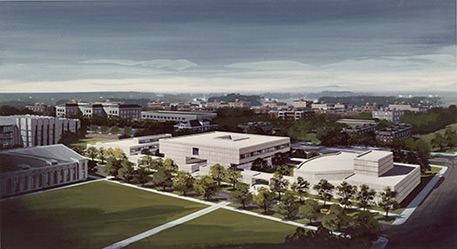
Architecture and Design
Designed by the renowned architect Edward Larrabee Barnes, the Smart Museum of Art at the University of Chicago showcases a modernist architectural approach that harmonizes with its educational and cultural objectives. The limestone-paneled building, characterized by its clean lines and unadorned surfaces, stands as a testament to modernist design principles. This architectural choice reflects the museum’s commitment to creating spaces that are both aesthetically pleasing and functional, fostering an environment conducive to the appreciation of art.
- Architectural Features and Renovations:
- The museum’s structure is complemented by the Cochrane-Woods Art Center, also a creation of Edward Larrabee Barnes, with both buildings connected by covered walkways. This design choice not only facilitates movement between spaces but also promotes a sense of unity within the campus’s architectural landscape.
- Significant renovations undertaken in 1999 reconfigured the museum’s interior, enhancing its exhibition spaces and public areas. This renovation included the addition of facilities initially designed to integrate music, further broadening the museum’s cultural offerings.
- In 2008, the museum’s courtyard underwent re-landscaping, revitalizing the outdoor sculpture garden. This space now features works by notable artists such as Scott Burton, Jene Highstein, Richard Hunt, Arnaldo Pomodoro, and Richard Serra, creating a dynamic outdoor gallery that complements the museum’s indoor collections.
- Operational Hours and Accessibility:
- The museum welcomes visitors from Tuesday to Sunday, operating from 10 AM to 4:30 PM. This schedule accommodates a wide range of visitors, from students and academics to tourists and local community members, ensuring that the museum remains an accessible cultural resource.
The architecture and design of the Smart Museum of Art, from its modernist exteriors to its thoughtfully renovated interiors and landscaped sculpture garden, play a crucial role in its mission to engage visitors with the world of art. By providing spaces that are both visually compelling and conducive to educational experiences, the museum reinforces its status as a key cultural institution within the University of Chicago and the broader art community in Chicago.
Educational Programs and Community Engagement
The Smart Museum of Art is deeply committed to fostering educational programs and community engagement, leveraging the vibrant intellectual and cultural energy of both the university and the South Side of Chicago. These programs are designed to address pressing cultural, social, and political issues, creating a multi-faceted discourse through collaborations with various campus, cultural, and civic organizations. Notably, the museum offers free admission, emphasizing its dedication to making art accessible to all, despite currently being closed for reinstallation.
Educational Programs and School Community Engagement:
- Initial Tour Experiences: Designed to empower students to engage with art without feeling intimidated, these tours introduce students to the museum in an accessible manner.
- Deeper Engagements: These include multi-site tours with other arts organizations on campus and collaboratively designed experiences through the Program Lab, enriching the educational experience.
- Art + Peace Program: A dynamic school residency for elementary-aged students, comprising two museum visits, eight in-class sessions with a teaching artist and museum docent, culminating in a celebratory exhibition of student artwork.
- Amplify Multi-Site Field Trips: These offer high-quality performance and visual arts education opportunities for teachers and their classes, enhancing the educational outreach.
- Art + Environment Program: Investigates ecological sustainability and civic activism through arts engagement, encouraging students to think critically about their environment.
Programs for University Students and Career Development:
- Feitler Center for Academic Inquiry: Offers research and career development support for UChicago students, ranging from entry-level introductions to museum careers to advanced, independent research experiences.
- Smart Scholars and Undergraduate Research Associates: Provide opportunities for students to engage in original research based on the museum’s collection, working closely with mentors on specific museum projects.
- Internships and Curatorial Training: Include internships in various museum departments and curatorial internships, offering hands-on experience in museum work and research support for exhibition projects.
Community Engagement and Teen Programs:
- Teen Programs: Aimed at South Side youth, these after-school, youth-driven programs support students in engaging with critical issues through ambitious real-world design projects that impact the larger community.
- CoCre8: A community learning project that brings together high school students, educators, artists, and arts administrators to explore how art can critically and creatively engage with the world, culminating in a collaborative art project.
- Contact Information for Engagement: For more information on teen opportunities, contact Dorian Nash, Manager of Public Programs and Acting Public Practice Lead. For CoCre8 inquiries, contact Michael Christiano, Deputy Director and Curator of Public Practice.
Through these diverse and comprehensive programs, the Smart Museum of Art demonstrates its unwavering commitment to educational excellence and community engagement, fostering a deeper appreciation and understanding of art among students and the broader community.
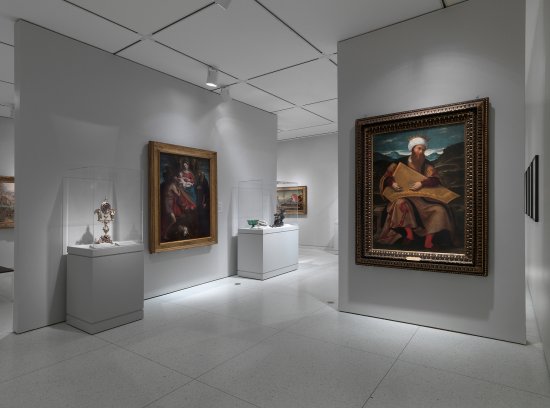
Visiting the Smart Museum of Art
Planning a visit to the Smart Museum of Art at the University of Chicago offers an enriching experience for art enthusiasts and casual visitors alike. Here’s what you need to know to make the most of your visit:
General Information:
- Location: 5550 S. Greenwood Ave., Chicago, Illinois 60637
- Contact: Phone: 773.702.0200, Email: smart-museum@uchicago.edu
- Website
- Hours of Operation:
- Tuesday to Sunday: 10 am – 4:30 pm
- Closed on Mondays
- Admission: Free to the public, with no special charge for exhibitions thanks to the support of SmartPartners.
Visitor Policies and Facilities:
- Policies to Note:
- Artworks must not be touched.
- Large bags, backpacks, and umbrellas should be checked in at the information desk.
- Food, drink, and gum are not permitted.
- Only pencils may be used for writing or sketching.
- Cell phones should be silenced.
- Photography is allowed under specific conditions—no flash or external lighting equipment; personal, noncommercial use only.
- Facilities Available:
- Complimentary bag and coat check; lockers available.
- Strollers are permitted throughout the museum.
- A ramp into the galleries is located on the west side of the lobby for accessibility.
Upcoming Events:
- Meiji Modern Opening Reception: March 21, 6 PM – 8 PM
- Family Day: Tiger Tales: March 23, 1 PM – 4 PM
- Calligraphy is for Lovers: March 28, 6 PM – 8 PM
Visitors to the Smart Museum of Art can expect a welcoming and accessible environment that encourages exploration and appreciation of art. The museum’s variety of collections, exhibitions, and educational programs, combined with its visitor-friendly policies and facilities, ensure a fulfilling experience for all. Whether you’re interested in attending a special event or exploring the museum’s diverse collections, the Smart Museum of Art is a key cultural destination in the Chicago area.
As we reflect on the significance of the Smart Museum of Art, it becomes clear that its influence extends far beyond its physical presence in Chicago. By championing a multidisciplinary approach to art and culture, the museum not only enriches the lives of its immediate audience but also contributes to the broader discourse on arts importance in society. The Smart Museum’s dedication to educational excellence and community engagement exemplifies the transformative potential of art institutions in fostering a more informed, empathetic, and connected world.
